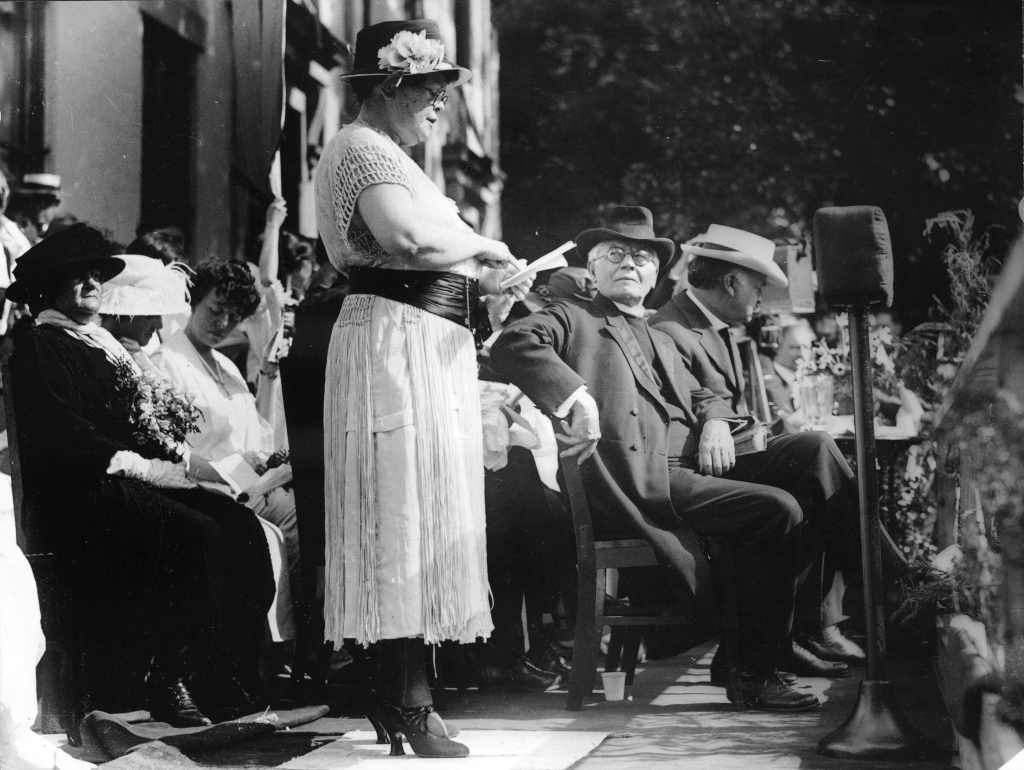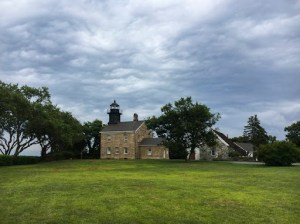In Washington, D.C., hundreds of flag-waving protesters rallied, displaying huge signs and shouting their message. More than 100 were arrested and jailed.
While this could be the narrative of the Jan. 6 attack on the U.S. Capitol building by domestic terrorists who questioned election results, it unfolded 104 years ago. It marked the first time that protesters picketed in front of the White House.
It was January 1917 when the group began their vigil, and they kept it up, whatever the weather, six days a week, for six months. Who were they?
Members of the National Woman’s Party, their cause was women’s suffrage: the right of women by law to vote in national or local elections. The NWP was formed by suffragette leader Alice Paul and by unexpected women’s rights advocate, wealthy Long Island socialite Alva Vanderbilt Belmont, the party’s president and primary benefactor.
Known for saying, “Pray to God. She will help you,” Belmont combined her wealth with public relations savvy. Working with Paul, she organized the White House protest and influenced major breakthroughs for women.
SOCIALITE/SUFFRAGETTE
In the early 20th century women were mostly perceived as demure second-class citizens. They were supposed to go along with the rules laid out by men. They were not supposed to be militant.
Alva Ertskin Smith’s father was a prominent cotton trader in Mobile, Ala., where she was born in 1853. Her charmed life included summering in posh Newport, R.I., European travel, and a Paris boarding school education.
But key events shifted her beliefs to a bolder, broader worldview. When the Civil War devastated the cotton trade, the family moved to New York City around 1859. By the time she was a teenager, her parents had died. Insulating herself from poverty, in 1875, the 22-year-old married William Kissam Vanderbilt, heir to the enormous Vanderbilt family fortune.
“There was a force in me that seemed to compel me to do what I wanted to do regardless of what might happen afterwards,” Ava Belmont said.
To enhance her public image as Mrs. Vanderbilt, she cultivated relationships with journalists as well as businesspeople and politicians. The couple drew attention during the Gilded Age by building grand houses, including the lavish, 110-room country estate called Idle Hour on Long Island’s Connetquot River in Oakdale, a chateau-esque mansion on Fifth Avenue in Manhattan which she helped design, and an opulent $9 million Newport summer palace they named Marble House. Later, she would build Sands Point’s Beacon House, described as a “gothic fantasy castle” by historian Howard Kroplick on vanderbiltcupraces.com.
But then she discovered her husband’s adultery. Their 1895 divorce yielded her a personal yearly fortune of $200,000 plus property. The gossips’ tongues wagged over the scandal, driven by chatter about her quietly taking a lover named Oliver Hazard Perry Belmont, whom she wed in 1896.
The New York Times reported that “Mr. Belmont’s attention to Mrs. Vanderbilt was talked about long before she secured her divorce from W. K. Vanderbilt …. The breach between Mr. and Mrs. Vanderbilt became so broad that a divorce seemed inevitable.”
Alva and Oliver Belmont had two summer houses in Newport and built the ornate Brookholt Mansion on 800 acres on Long Island off Front Street in East Meadow in 1897. He died at Brookholt of septic poisoning in 1908.
SHIFTING TACTICS
Being divorced and widowed led to a deep depression; she took up charity work to fight it off, and attended suffrage meetings. She was so moved that she devoted her time, her fortune, and her home to women’s rights, especially suffrage and better standards of work and wages for working women.
Her consciousness shifted: After witnessing a militant suffrage organization’s London rally, she wrote, “There was a force in me that seemed to compel me to do what I wanted to do regardless of what might happen afterwards.”
She became more confrontational and sanctioned stronger tactics. As reporter Karen Grigsby Bates told NPR, “Alva embraced feminism and was inclined to view the very notion of romantic love as a plot against all women.”
Because of her financial and other support, the 19th Amendment to the U.S. Constitution was ratified on Aug. 26, 1920, putting women on an equal basis with men. She continued working for women’s rights by writing articles and became a noted architectural designer; she was one of the first women elected to the American Institute of Architects.
She died in Paris in 1933. Her casket was draped with a purple protest banner featuring a quote by suffragist Susan B. Anthony: “Failure is impossible.” Belmont is buried at Woodlawn Cemetery in the Bronx.
A virtual photo exhibit on Alva Vanderbilt Belmont celebrates Women’s History Month at the Suffolk County Vanderbilt Museum throughout the month of March.



























